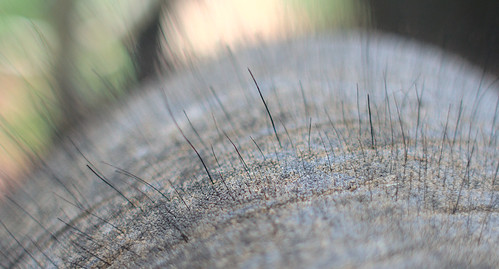 Researchers at the Weizmann Institute of Science have fostered chemical reactions at "one hundredth of a degree above absolute zero," analogous to conditions in interstellar space. By merging two parallel beams of ultra-cold atoms, scientists kept them sedated enough for quantum behavior. Chemical reactions "took place in peaks, at specific energies – a demonstration of the tunneling that occurs when quantum particles act as waves." While quantum chemistry is new, physicists have been chilling individual atoms for years—thanks in part to the work of new Nobel laureate Dave Wineland. On Uncertain Principles, Chad Orzel explains that Wineland pioneered the use of lasers to reduce the kinetic energy of trapped ions. Orzel writes, "every time an atom or ion absorbs a photon of light, it gets a kick in the direction the laser was headed." By only kicking ions when they are headed in the opposite direction, a laser can bring them close to a standstill. And a tip to the balding on Life Lines (with winter just around the corner): the sparse hair of elephants might "keep the animals cool as opposed to keeping them warm as it does for other mammals." Research showed that with a little wind, elephant hairs "could improve heat loss by 5-20%."
Researchers at the Weizmann Institute of Science have fostered chemical reactions at "one hundredth of a degree above absolute zero," analogous to conditions in interstellar space. By merging two parallel beams of ultra-cold atoms, scientists kept them sedated enough for quantum behavior. Chemical reactions "took place in peaks, at specific energies – a demonstration of the tunneling that occurs when quantum particles act as waves." While quantum chemistry is new, physicists have been chilling individual atoms for years—thanks in part to the work of new Nobel laureate Dave Wineland. On Uncertain Principles, Chad Orzel explains that Wineland pioneered the use of lasers to reduce the kinetic energy of trapped ions. Orzel writes, "every time an atom or ion absorbs a photon of light, it gets a kick in the direction the laser was headed." By only kicking ions when they are headed in the opposite direction, a laser can bring them close to a standstill. And a tip to the balding on Life Lines (with winter just around the corner): the sparse hair of elephants might "keep the animals cool as opposed to keeping them warm as it does for other mammals." Research showed that with a little wind, elephant hairs "could improve heat loss by 5-20%."
Advertisment